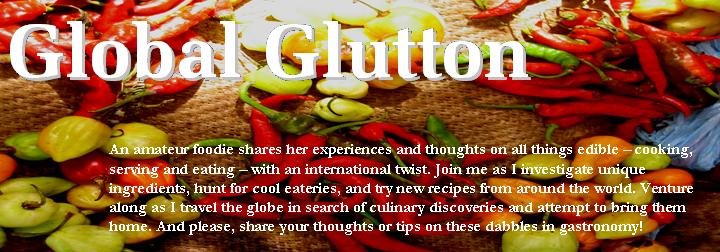
June 3, 2007
Oxford, UK
My inaugural post is on an auspicious ingredient, the flower of love and luck – lavender. Oxford, England is abloom with these fragrant buds this time of year, and while appreciating their elegant stems and dulcet smells in the University’s gardens, I was inspired to bring them into the kitchen. I didn’t have to wander too far from home to find this culinary inspiration! The flowers have a beautiful color, the plants smell great, and its in-season. English lavender, the type that grows around here, is apparently especially succulent and fragrant, and I’ve been experimenting with it in a few recipes.
My inaugural post is on an auspicious ingredient, the flower of love and luck – lavender. Oxford, England is abloom with these fragrant buds this time of year, and while appreciating their elegant stems and dulcet smells in the University’s gardens, I was inspired to bring them into the kitchen. I didn’t have to wander too far from home to find this culinary inspiration! The flowers have a beautiful color, the plants smell great, and its in-season. English lavender, the type that grows around here, is apparently especially succulent and fragrant, and I’ve been experimenting with it in a few recipes.
I can hardly take credit for the idea. Most people may be familiar with lavender as it’s used in soaps, perfumes and potpourris. But it’s commonly used in cooking as well. As an herb, the plant has been in documented use for over 2,500 years. It’s closely related to rosemary, sage and thyme. In places like Provence , I've seen chefs use lavender in savory and sweet recipes alike for its soft, sweet flavor, which carries lemon or lime overtones.
Lavender buds are best used for cooking, particularly dried ones, which have a more concentrated flavor. But you can still cut stalks from your garden and use the healthiest, largest, most deeply colored fresh buds you see. But wash them well, then carefully dab dry between sheets of paper towels. The prescribed ratio is to use 1/3 as much dried lavender as you would fresh flowers. Take care not to overuse as a little goes a long way – too much can give dishes a bitter taste. If you want to make your own dried lavender to store, it’s best to harvest buds just when the flowers begin to open, when they contain the most essential oils.
Lavender sugar is another way of preserving the flowers’ flavor for future use. Just place 1-2 tbspn of ground, dried flowers into 1 cup of sugar, seal it tightly for a week or longer, and you’ll have lavender-infused sugar to use in baking or with beverages. If you want to use the flowers in savory dishes like the chicken dish listed here, it’s versatile – lavender compliments fennel, oregano, rosemary, thyme and sage flavors. I also like using the flowers as a fragrant and elegant garnish for champagne, white sangria, cakes, fruit salads and sorbets.
I’ve experimented with a few easy recipes for using this dynamic garden plant, which I’m posting below. Please feel free to share more recipes or culinary uses for lavender. And I’d love feedback on these recipes too. . .


No comments:
Post a Comment